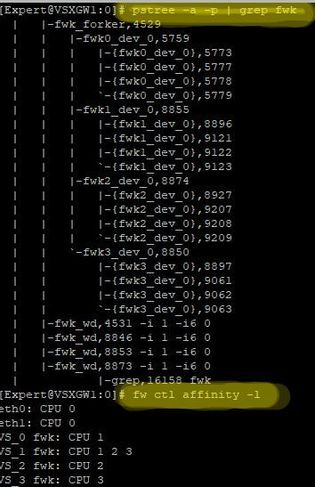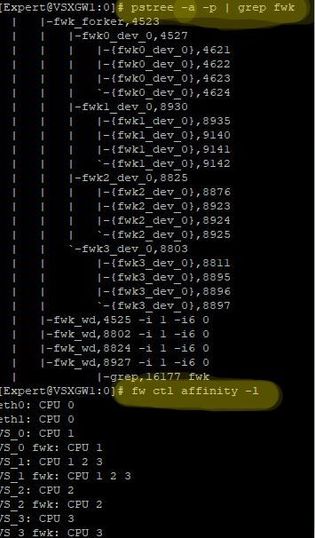- Products
Network & SASE IoT Protect Maestro Management OpenTelemetry/Skyline Remote Access VPN SASE SD-WAN Security Gateways SmartMove Smart-1 Cloud SMB Gateways (Spark) Threat PreventionCloud Cloud Network Security CloudMates General CloudGuard - WAF Talking Cloud Podcast Weekly ReportsSecurity Operations Events External Risk Management Incident Response Infinity AI Infinity Portal NDR Playblocks SOC XDR/XPR Threat Exposure Management
- Learn
- Local User Groups
- Partners
- More
This website uses Cookies. Click Accept to agree to our website's cookie use as described in our Privacy Policy. Click Preferences to customize your cookie settings.
- Products
- AI Security
- Developers & More
- Check Point Trivia
- CheckMates Toolbox
- General Topics
- Products Announcements
- Threat Prevention Blog
- Upcoming Events
- Americas
- EMEA
- Czech Republic and Slovakia
- Denmark
- Netherlands
- Germany
- Sweden
- United Kingdom and Ireland
- France
- Spain
- Norway
- Ukraine
- Baltics and Finland
- Greece
- Portugal
- Austria
- Kazakhstan and CIS
- Switzerland
- Romania
- Turkey
- Belarus
- Belgium & Luxembourg
- Russia
- Poland
- Georgia
- DACH - Germany, Austria and Switzerland
- Iberia
- Africa
- Adriatics Region
- Eastern Africa
- Israel
- Nordics
- Middle East and Africa
- Balkans
- Italy
- Bulgaria
- Cyprus
- APAC
CheckMates Fest 2026
Join the Celebration!
AI Security Masters
E1: How AI is Reshaping Our World
MVP 2026: Submissions
Are Now Open!
What's New in R82.10?
Watch NowOverlap in Security Validation
Help us to understand your needs better
CheckMates Go:
R82.10 and Rationalizing Multi Vendor Security Policies
Turn on suggestions
Auto-suggest helps you quickly narrow down your search results by suggesting possible matches as you type.
Showing results for
- CheckMates
- :
- Products
- :
- Network & SASE
- :
- Security Gateways
- :
- VSX Affinity Question?
Options
- Subscribe to RSS Feed
- Mark Topic as New
- Mark Topic as Read
- Float this Topic for Current User
- Bookmark
- Subscribe
- Mute
- Printer Friendly Page
Turn on suggestions
Auto-suggest helps you quickly narrow down your search results by suggesting possible matches as you type.
Showing results for
Are you a member of CheckMates?
×
Sign in with your Check Point UserCenter/PartnerMap account to access more great content and get a chance to win some Apple AirPods! If you don't have an account, create one now for free!
- Mark as New
- Bookmark
- Subscribe
- Mute
- Subscribe to RSS Feed
- Permalink
- Report Inappropriate Content
VSX Affinity Question?
I have tested a lot in the lab with vsx and affinity over the last days. Now a question has come up which I cannot explain 100%.
Way 1:
When I search the internet, they all say that the CoreXL instances must be assigned to the Core's. Typical assignment:
fw ctl affinity -s -d -vsid 0 -cpu 1
fw ctl affinity -s -d -vsid 1 -cpu 1
fw ctl affinity -s -d -vsid 2 -cpu 2
fw ctl affinity -s -d -vsid 3 -cpu 3
After that my affinity looks like this:
Way 2:
From my point of view, it would be better to distribute the fwk process to the cores as well. For this purpose I have set the following:
fw ctl affinity -s -d -pname fwk -vsid 0 -cpu 1
fw ctl affinity -s -d -pname fwk -vsid 1 -cpu 1
fw ctl affinity -s -d -pname fwk -vsid 2 -cpu 2
fw ctl affinity -s -d -pname fwk -vsid 3 -cpu 3
Here the affinity looks as follows:
Now the question arises for me, which of the two ways is the better one?
PS:
Top shows the fwkX processes:
A small calculation sample for the utilization of process fwkX:
- fwk0_X -> fw instance thread that takes care for the packet processing
- fwk0_dev_X -> the thread that takes care for communication between fw instances and other CP daemons
- fwk0_kissd -> legacy Kernel Infrastructure (obsolete)
- fwk0_hp -> (high priority) cluster thread
➜ CCSM Elite, CCME, CCTE ➜ www.checkpoint.tips
- Tags:
- performance
7 Replies
- Mark as New
- Bookmark
- Subscribe
- Mute
- Subscribe to RSS Feed
- Permalink
- Report Inappropriate Content
- Mark as New
- Bookmark
- Subscribe
- Mute
- Subscribe to RSS Feed
- Permalink
- Report Inappropriate Content
As far as I am concerned, the last second option is not required. Affinity for FWK is handled by the first approach automatically. US affinity with pname is for other processes.
- Mark as New
- Bookmark
- Subscribe
- Mute
- Subscribe to RSS Feed
- Permalink
- Report Inappropriate Content
In the user space firewall, this is basically a process that now calls several threads that work on several cores. It just brought up my question. I did the same with all my VSX installations as you described in the history.
Here an example from the LAB:
Test 1:
# fw ctl affinity -s -d -pname fwk -vsid 0 -cpu 1
# fw ctl affinity -s -d -pname fwk -vsid 1 -cpu 1-3
# fw ctl affinity -s -d -pname fwk -vsid 2 -cpu 2
# fw ctl affinity -s -d -pname fwk -vsid 3 -cpu 3
# reboot
Test 2:
# fw ctl affinity -s -d -vsid 0 -cpu 1
# fw ctl affinity -s -d -vsid 1 -cpu 1-3
# fw ctl affinity -s -d -vsid 2 -cpu 2
# fw ctl affinity -s -d -vsid 3 -cpu 3
# reboot
When you do research here at LAB, even more amazing things come out. No matter which command I use, the instances always remain the same on Linux level. At the process level, I can't see any difference. See pictures above. I have a system with 4 cores and all instances are assigned to all cores on process level. Whether I change the affinity with one or the other command here.
I would expect to see even one thread process if I set only one over the affinity. I don't understand that. Hmmmm
➜ CCSM Elite, CCME, CCTE ➜ www.checkpoint.tips
- Mark as New
- Bookmark
- Subscribe
- Mute
- Subscribe to RSS Feed
- Permalink
- Report Inappropriate Content
If this is an R80.40 box, I think what you're seeing with fwk on all CPUs is expected behavior.
We have a mechanism to dynamically allocate the worker/SND split without a reboot.
As I recall, we basically allocate all core/CPUs to both functions and just dynamically use them (or not) depending on system demand.
We have a mechanism to dynamically allocate the worker/SND split without a reboot.
As I recall, we basically allocate all core/CPUs to both functions and just dynamically use them (or not) depending on system demand.
- Mark as New
- Bookmark
- Subscribe
- Mute
- Subscribe to RSS Feed
- Permalink
- Report Inappropriate Content
Hi @PhoneBoy ,
With R80.40 this would be a logical explanation.
But it is an R80.30 VSX LS cluster.
➜ CCSM Elite, CCME, CCTE ➜ www.checkpoint.tips
- Mark as New
- Bookmark
- Subscribe
- Mute
- Subscribe to RSS Feed
- Permalink
- Report Inappropriate Content
Is it 3.10 kernel or 2.6 kernel?
- Mark as New
- Bookmark
- Subscribe
- Mute
- Subscribe to RSS Feed
- Permalink
- Report Inappropriate Content
2.6 kernel
➜ CCSM Elite, CCME, CCTE ➜ www.checkpoint.tips
Leaderboard
Epsum factorial non deposit quid pro quo hic escorol.
| User | Count |
|---|---|
| 15 | |
| 13 | |
| 10 | |
| 8 | |
| 5 | |
| 4 | |
| 4 | |
| 4 | |
| 2 | |
| 2 |
Upcoming Events
Thu 22 Jan 2026 @ 05:00 PM (CET)
AI Security Masters Session 2: Hacking with AI: The Dark Side of InnovationTue 27 Jan 2026 @ 11:00 AM (EST)
CloudGuard Network Security for Red Hat OpenShift VirtualizationThu 12 Feb 2026 @ 05:00 PM (CET)
AI Security Masters Session 3: Exposing AI Vulnerabilities: CP<R> Latest Security FindingsThu 26 Feb 2026 @ 05:00 PM (CET)
AI Security Masters Session 4: Powering Prevention: The AI Driving Check Point’s ThreatCloudThu 22 Jan 2026 @ 05:00 PM (CET)
AI Security Masters Session 2: Hacking with AI: The Dark Side of InnovationTue 27 Jan 2026 @ 11:00 AM (EST)
CloudGuard Network Security for Red Hat OpenShift VirtualizationThu 26 Feb 2026 @ 05:00 PM (CET)
AI Security Masters Session 4: Powering Prevention: The AI Driving Check Point’s ThreatCloudAbout CheckMates
Learn Check Point
Advanced Learning
YOU DESERVE THE BEST SECURITY
©1994-2026 Check Point Software Technologies Ltd. All rights reserved.
Copyright
Privacy Policy
About Us
UserCenter









